#wide field infrared survey explorer
Explore tagged Tumblr posts
Photo
On APOD, alt image:


2024 September 29
Seven Dusty Sisters Image Credit: WISE, IRSA, NASA; Processing & Copyright: Francesco Antonucci
Explanation: Is this really the famous Pleiades star cluster? Known for its iconic blue stars, the Pleiades is shown here in infrared light where the surrounding dust outshines the stars. Here, three infrared colors have been mapped into visual colors (R=24, G=12, B=4.6 microns). The base images were taken by NASA’s orbiting Wide Field Infrared Survey Explorer (WISE) spacecraft. Cataloged as M45 and nicknamed the Seven Sisters, the Pleiades star cluster is by chance situated in a passing dust cloud. The light and winds from the massive Pleiades stars preferentially repel smaller dust particles, causing the dust to become stratified into filaments, as seen. The featured image spans about 20 light years at the distance of the Pleiades, which lies about 450 light years distant toward the constellation of the Bull (Taurus).
∞ Source: apod.nasa.gov/apod/ap240929.html
#astronomy#astronomy picture of the day#star cluster#open star cluster#asterism#Pleiades#Messier 45#M45#interstellar dust#WISE#wide field infrared survey explorer#infrared
131 notes
·
View notes
Text
A prolific NASA asteroid-hunting mission has come to an end. Engineers sent a final command to the agency's NEOWISE (Near-Earth Object Wide-field Infrared Survey Explorer) spacecraft on Thursday (Aug. 8), ordering the probe to turn off its transmitter after nearly 15 years of operation in low Earth orbit. "The NEOWISE mission has been an extraordinary success story as it helped us better understand our place in the universe by tracking asteroids and comets that could be hazardous for us on Earth," Nicola Fox, associate administrator for the Science Mission Directorate at NASA Headquarters, said in a statement on Thursday.
Continue Reading.
#Science#Space#Astronomy#Near-Earth Object Wide-Field Infrared Survey Explorer#NEOWISE#National Aeronautics and Space Administration#NASA
83 notes
·
View notes
Text
Comet NEOWISE rising over the Earth just before dawn as seen from the International Space Station. ☄️
—
C/2020 F3 (NEOWISE) or Comet NEOWISE is a long period comet with a near-parabolic orbit discovered on 27 March 2020 by astronomers during the NEOWISE mission of the Wide-field Infrared Survey Explorer (WISE) space telescope.
#Comet NEOWISE#C/2020 F3 (NEOWISE)#NEOWISE#Wide-field Infrared Survey Explorer (WISE)#space telescope#comet#International Space Station#Earth#space#astronomy#astronomers
69 notes
·
View notes
Link
4 min read A Solar Neighborhood Census, Thanks to NASA Citizen Science This artist’s conce...
#originaltags#astrophysics division#brown dwarfs#citizen science#neowise#stars#the universe#wise (wide-field infrared survey explorer)
0 notes
Text
HOW ARE BLACK HOLES CREATED, AND HOW DO THEY GROW??
Blog#461
Wednesday, December 11th, 2024
Welcome back,
In 2017, astronomers started finding monster black holes in the very early universe. Containing roughly a billion times the mass of our Sun, these black holes were surrounded by disks of infalling matter shining so intensely that we can detect them across immense stretches of space and time.
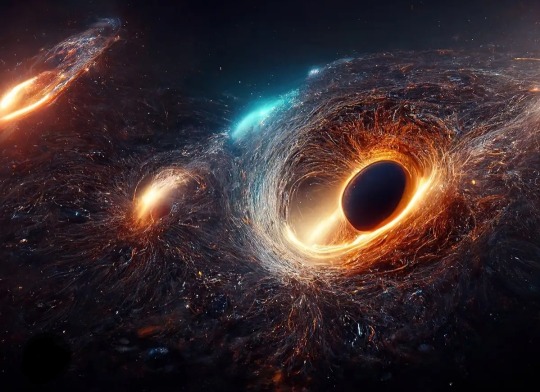
These gravitational giants existed when the universe was only 700 million years old, or 5 percent its current age. At that point in cosmic history, the universe was still a toddler. Gravity was just beginning to rein in clouds of gas and dark matter to form structures that would later evolve into mature spiral and elliptical galaxies. Stars were beginning to pop into being, but they do today.
According to the traditional picture of black hole formation and growth, the universe at this time simply had not existed long enough for black holes to bulk up to a billion solar masses.
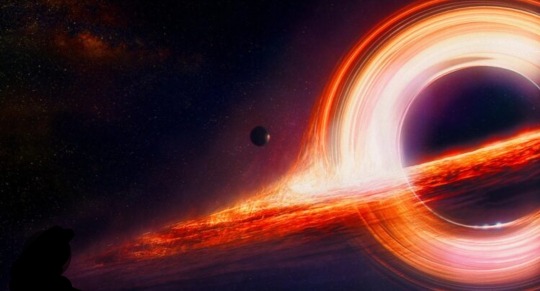
So, based on our general understanding of how black holes form and grow, these black holes should not exist.
And yet they do — posing a major challenge that astrophysicists have yet to unravel.
Quasars are brightly shining beacons of light and energy generated by the accretion of material onto supermassive black holes. In the 1990s, astronomers using a combination of ground- and space-based telescopes started to find extremely distant quasars powered by black holes of a billion or more solar masses.
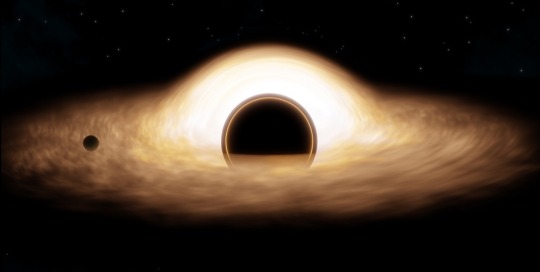
By the mid-2010s, it was no longer a big deal to find quasars dating back to 1 billion or 2 billion years after the Big Bang. But theorists had a difficult time explaining how such massive black holes could have arisen so soon in the universe’s history.
For quasars and other objects that existed many billions of years ago, it’s meaningless to express their distances in terms of light-years. The universe has expanded so much between then and now that astronomers instead refer to an object’s redshift, which is a measurement of how much cosmic expansion has stretched the object’s light toward redder (longer) wavelengths.
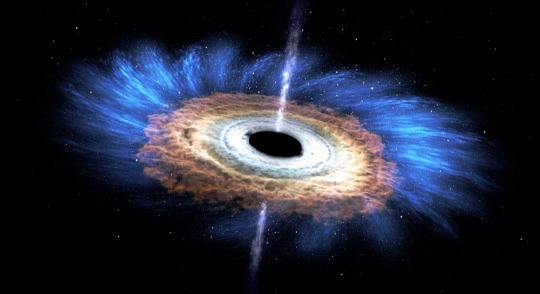
For years, astronomers such as the University of Arizona’s Xiaohui Fan have been identifying quasars at redshifts as high as 6, when the universe was about 900 million years old. They’ve even found a few around redshift 7, which corresponds to an era when the universe was about 735 million years old. But in late 2017, an international team led by Eduardo Bañados of the Carnegie Institution for Science announced a quasar at a record-shattering redshift of 7.54. This quasar, designated J1342+0928 (J1342 for short), based on its sky coordinates in Boötes, was radiating 40 trillion Suns’ worth of energy at a time when the universe was only 690 million years old.
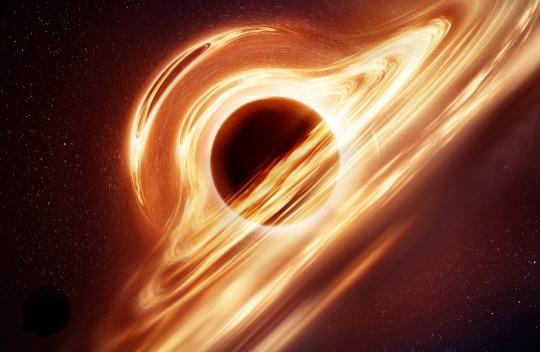
The team found J1342 by mining data from NASA’s Wide-field Infrared Survey Explorer satellite, the United Kingdom Infrared Telescope Deep Sky Survey Large Area Survey, and the DECam Legacy Survey. They used the 6.5-meter Magellan Telescope in Chile to measure the quasar’s redshift, while observations with the 8-meter Gemini North Telescope in Hawaii enabled the team to estimate the black hole’s mass: around 800 million Suns.
Originally published on https://www.astronomy.com
COMING UP!!
(Saturday, December 14th, 2024)
"HOW BIG CAN 'SUPER MASSIVE BLACK HOLES' GET??"
#astronomy#outer space#alternate universe#astrophysics#universe#spacecraft#white universe#space#parallel universe#astrophotography
82 notes
·
View notes
Text
Nasa's image of the day is of the witch head Nebula.
Very Halloween themed.

Taken by NASA's Wide-Field Infrared Survey Explorer, or WISE
42 notes
·
View notes
Text

A witch appears to be screaming out into space in this image from NASA's Wide-Field Infrared Survey Explorer, or WISE. The infrared portrait shows the Witch Head nebula, named after its resemblance to the profile of a wicked witch.
Happy Halloween! 🎃
via NASA
14 notes
·
View notes
Text




Final data and undiscovered images from NASA’s NEOWISE
While NASA’s NEOWISE telescope ended its journey through space on Nov. 1, 2024, the team at IPAC, a science center at Caltech, was working on one further gift from the prolific mission.
The final data release from NEOWISE was released to the astronomy community just two weeks later, on Nov. 14, encompassing over 26 million images and nearly 200 billion sources detected by the telescope. And today, IPAC is releasing six new images from the mission’s archival data as a tribute to this landmark project, available here: https://www.astropix.org/link/3b2x
NEOWISE was launched as the Wide-field Infrared Survey Explorer (WISE) in 2009 and then reactivated in 2013 as NEOWISE, the asteroid-hunting phase of the mission. The infrared space telescope studied the entire night sky and conducted 21 complete sky surveys during more than a decade of operation. The mission focused on identifying and studying small objects in our solar system like asteroids and comets, also known as near-Earth objects (NEOs), but the infrared data collected by the telescope has proven to have countless applications throughout the field of astronomy.
The mission concluded operations in July 2024, and during its 15 years in space, scientists have been able to revisit the same areas of the sky again and again, with most being observed by NEOWISE at least 220 times. This repeated observation helps astronomers search for and study objects that change in brightness or location.
“Being able to watch the changing sky for nearly 15 years has opened a new avenue for time-domain science, for everything from the closest asteroids to the most distant quasars,” said Joe Masiero, Research Scientist at IPAC and the Deputy Principal Investigator of the mission.
In recent years, NEOWISE has enabled scientists to study curious objects like brown dwarfs and discover patterns in large populations of comets. Over its mission lifetime, NEOWISE has characterized over 3000 NEOs—approximately 10% of the known population, and something that was only possible due to its long tenure scanning the sky.
The final NEO observed by NEOWISE, known as 2007 LV8, was seen over 100 times in the closing days of the survey since it closely followed the telescope’s scan pattern.
“Because of NEOWISE’s extensive view of the sky, we get a more complete picture of the asteroids and comets in Earth’s orbital neighborhood. The data provide a unique way of understanding factors like the size and rotation period of these NEOs,” said Roc Cutri, NEOWISE Task Lead and Project Scientist at IPAC.
The team at IPAC was responsible for the ingestion and processing of raw data, production of final data products, and archiving mission science and engineering data. IPAC also distributes WISE/NEOWISE data to the community through the NASA/IPAC Infrared Science Archive (IRSA) and provides services such as powerful analysis and visualization tools. The IPAC Communications & Education team prepares mission images for public release in the AstroPix image gallery.
Never-before-seen images from NEOWISE
During the original WISE mission, over 100 areas of the sky were highlighted in public image releases, but they revealed only a tiny fraction of the full-sky coverage of the survey.
“The WISE and NEOWISE data releases are built for researchers, but they also embody some of the most amazing images of our infrared sky,” said Robert Hurt, IPAC Visualization Scientist. “They are so easy to work with it's almost too easy to make a beautiful image from them! That's why I wanted to revisit the archive to locate some hidden gems we missed before.”
To find new interesting areas of the sky, the positions of the previous images were overlaid onto maps of the sky using data from WISE and other missions. The new map revealed many zones that have not been highlighted for the public but contain fascinating regions of cosmic dust where stars are born. Six spots were selected, with many of them spanning large areas of the sky—a distinct advantage of an all-sky survey such as NEOWISE.
One image stands out as particularly meaningful to the IPAC community: NEOWISE’s view of the California Nebula.
Named after the dust cloud’s resemblance to the California coastline, Masiero says it commemorates the years of hard work and dedication of the NEOWISE data processing team at IPAC, located in Pasadena, California.
“I’m really grateful for all of the people at IPAC who have put so much effort into making this the best dataset possible, for today and for future generations,” said Masiero.
The California Nebula is located in the Milky Way, about 1000 light-years away, in the Perseus constellation. It is a dusty region illuminated by the nearby massive star Menkib, born just a few million years ago. The entire California Nebula stretches across 100 light-years and is fully captured in this wide-field view. The dust clouds glow brightly in longer wavelengths of infrared light, displayed here in green and red.
The new images pulled from the archives represent the billions of sources detected by NEOWISE waiting to be studied by future researchers.
“We know there are more things to discover in the NEOWISE data that we just haven’t noticed yet,” said Masiero. “As astronomers develop new tools and techniques and as new surveys are conducted, we can be sure the NEOWISE archive will be one of the first places we look for the data needed to better understand our universe.”
NEOWISE’s legacy is only just beginning
As astronomers continue to mine the NEOWISE archive at IRSA, there are many untold stories of comets, asteroids, nebulae, and more waiting in the data.
Yuna Kwon, a solar system astronomer and IPAC archive scientist, first joined as a postdoctoral fellow in 2023. Even though the NEOWISE mission ended not long after, her work with its data is only just beginning.
Along with Masiero, Kwon is leading a project called COSINE, Cometary Object Study Investigating their Nature and Evolution, cataloging and analyzing comets observed by NEOWISE.
“Together with my amazing colleagues at IPAC, we now have the largest-ever consistently analyzed comet database and are preparing publications based on our findings,” said Kwon.
Kwon studies comets because they are some of the oldest and most primitive objects in our solar system. Their physical properties could tell us about the conditions during the solar system’s formation.
“Comets are like cats — they have tails and do precisely what they want,” said Kwon. “Thankfully, NEOWISE has a treasure trove of data to study these idiosyncratic objects.”
Before working with NEOWISE data, Kwon said that it was hard to decipher large-scale trends from only a small number of comets. But now with COSINE and NEOWISE data, she is able to understand the big picture.
“I'm truly enjoying this exploration,” said Kwon. “My experience with NEOWISE data has broadened my perspective and deepened my understanding of the comet population itself, putting the observations in a broader context of the formation and evolution of the solar system.”
Going forward, Kwon hopes to combine the knowledge gained from NEOWISE with new data from upcoming observatories including NEO Surveyor and SPHEREx.
TOP IMAGE: The California Nebula is seen in its entirety in this image from NASA’s WISE mission, covering over 25 square degrees of sky. In this infrared view, the dust clouds underlying the nebula glimmer in greens and reds. Also known as NGC 1499, it derives its common name from its similarity to the dramatic coastline of the U.S. state of California.
The California Nebula extends 100 light years through space, and it is illuminated by one of the hottest stars visible in the night sky, known as Menkib. Its surface temperature is about 37,000 degrees, and its total energy output is over 300,000 times more than that of our own Sun. It belongs to an association of very hot stars that were born from the California Nebula only a few million years ago.
The stellar winds blowing out from the fast-moving Menkib pile up as they impact interstellar gas and dust to create a shock wave. Known a “bow shock,” as an analogy to the waves that pile up at the bow of a sailing ship, it heats up the ambient dust clouds through which it is passing, seen here in red.
This image uses data from the original cryogenic phase of the WISE mission. Infrared wavelengths of 3.4 & 4.6 microns are displayed in blue and cyan, respectively, and are dominated by the glow of stars. Light with a wavelength of 12 microns is displayed in green and traces the presence of carbon-rich dust known as polycyclic aromatic hydrocarbons (PAHs). The 22 micron light is rendered in red and is dominated by the thermal glow of warm dust.
Credit NASA/JPL-Caltech/IPAC
CENTRE IMAGE: Skygazers have dubbed this region the “Gecko Nebula” for its resemblance to a downturned head with a pointed snout, though astronomers refer to the area as LBN 437. This cloud of dust and gas is a region of star formation, which is revealed clearly in infrared light by NASA’s WISE mission.
Near the “snout” of the gecko you can see a blazing star with a strong red tint, due to its brightness at longer wavelengths of infrared light. This baby star is in its final stages of formation, and while it gobbles up the last of its fuel, some is ejected away in jets of gas that are carving cavities through the surrounding dust clouds. These structures are known as “Herbig Haro” objects to astronomers, and the most prominent around this young star is called HH 398.
This image uses data from the original cryogenic phase of the WISE mission. Infrared wavelengths of 3.4 & 4.6 microns are displayed in blue and cyan, respectively, and are dominated by the glow of stars. Light with a wavelength of 12 microns is displayed in green and traces the presence of carbon-rich dust known as polycyclic aromatic hydrocarbons (PAHs). The 22 micron light is rendered in red and is dominated by the thermal glow of warm dust.
Credit NASA/JPL-Caltech/IPAC
LOWER IMAGE: This tadpole-shaped nebula is known as CG12. It is an example of a “cometary globule,” where a denser region of dust trails off into thread-like strands. While challenging to see in visible light images, WISE easily shows the full extent of the globule’s tail as it lights up at longer wavelengths of infrared light.
The tip of CG12 is also known as NGC 5367 in the Centaurus constellation. This region is easier to see as a “reflection nebula” as the light of the bright stars scatters off of the enveloping dust clouds, showing up in visible light images as a blue haze.
This image uses data from the original cryogenic phase of the WISE mission. Infrared wavelengths of 3.4 & 4.6 microns are displayed in blue and cyan, respectively, and are dominated by the glow of stars. Light with a wavelength of 12 microns is displayed in green and traces the presence of carbon-rich dust known as polycyclic aromatic hydrocarbons (PAHs). The 22 micron light is rendered in red and is dominated by the thermal glow of warm dust.
Credit NASA/JPL-Caltech/IPAC
BOTTOM IMAGE: These ghostly pillars span a large swath of sky about half the width of your outstretched hand held at arm’s length, falling along the boundary between the constellations of Vela and Centaurus. However, they have no common name and are not identified in historic catalogs like Messier or NGC for the simple reason they cannot be seen in visible light. This region falls behind a veil of dust in the spaces between stars and can only be seen at longer wavelengths of infrared light, as seen here in data from NASA’s WISE mission. At wavelengths of 12 and 22 microns, displayed here in green and red, respectively, the obscuring dust becomes more transparent, and denser clouds of dust begin to glow clearly under the light of neighboring stars.
Pillars such as these are found in regions where there are clumpy, denser clouds of gas and dust falling under the illumination of nearby hot, bright stars. The dust particles are slowly destroyed by the stars’ ultraviolet light, but denser regions erode more slowly than their surroundings, and even shield material behind them. This creates striking pillar-shaped structures like these.
The tips of these pillars often serve as stellar nurseries, as the denser gas and dust collapse over time to form and nurture new stars. These can be seen as red-tinted spots of light in the two largest pillars in this image, glowing brightly at the longest wavelengths of infrared light.
This image uses data from the original cryogenic phase of the WISE mission. Infrared wavelengths of 3.4 & 4.6 microns are displayed in blue and cyan, respectively, and are dominated by the glow of stars. Light with a wavelength of 12 microns is displayed in green and traces the presence of carbon-rich dust known as polycyclic aromatic hydrocarbons (PAHs). The 22 micron light is rendered in red and is dominated by the thermal glow of warm dust.
Credit NASA/JPL-Caltech/IPAC
8 notes
·
View notes
Text
Is this really the famous Pleiades star cluster? Known for its iconic blue stars, the Pleiades is shown here in infrared light where the surrounding dust outshines the stars. Here, three infrared colors have been mapped into visual colors (R=24, G=12, B=4.6 microns). The base images were taken by NASA’s orbiting Wide Field Infrared Survey Explorer (WISE) spacecraft. Cataloged as M45 and nicknamed…

View On WordPress
8 notes
·
View notes
Text
NASAs NEOWISE Spacecraft Re-Enters Atmosphere But More Discoveries Await!
NASA’s NEOWISE (Near-Earth Object Wide-field Infrared Survey Explorer) spacecraft re-entered and burned up in Earth’s atmosphere on Friday night, as expected. Launched in 2009 as the WISE mission, the spacecraft has been mapping the entire sky at infrared wavelengths over and over for nearly fifteen years. During that time, more than one hundred thousand amateur […] from NASA https://ift.tt/cKYTXFR
#NASA#space#NASA’s NEOWISE Spacecraft Re-Enters Atmosphere#But More Discoveries Await!#Michael Gabrill
2 notes
·
View notes
Text
Humanity’s interest in the nebula can be traced back to the year 1181, when astronomers in Japan and China both recorded seeing a new star. After six months, it was gone, but not forgotten. In 2013, an amateur astronomer named Dana Patchick was looking at images taken by NASA’s Wide-field Infrared Survey Explorer, a now-decommissioned infrared space telescope. He identified a nebula in the region of space where the star may have been, 7,500 light years away from Earth, in the Cassiopeia constellation. In the decade that followed, astronomers concluded Pa 30 nebula was likely the remnants of a supernova, which the ancient astronomers had witnessed all those years ago.
#
I feel like it's relatively rare that we have documentation of a supernova in this way. The illustration is very cool, check it out.
2 notes
·
View notes
Text
Soon, NEOWISE will turn into the very thing it studied: A shooting star.

On December 14th 2009, the space telescope WISE (Wide-Field Infrared Survey Explorer) was launched from Vandenberg Air Force Base, California, to survey the entire infrared sky in four infrared wavelength bands. During the initial phase of operation it discovered a great variety of objects, such as the first Y-type brown dwarf and exoplanets, but it proved to be especially good at discovering near earth objects when its mission was extended for four months in 2010 and given the name NEOWISE.
After being put into hibernation in 2011, it was reactivated in 2013, continuing under the mission name NEOWISE, a name that is meaningful in two ways: It is both short for Near-Earth Object Wide-Field Infrared Survey Explorer and describes the main function, but it also symbolizes the new life of WISE with the addition of the prefix Neo. Since the depletion of the coolant in 2010, giving WISE a “new” life became necessary, because only two of the initial four infrared detectors were still functioning, making a continuation of the original mission impossible– but it still provided enough data for a new one.
The space telescope’s new primary role was that of an asteroid and comet hunter and as such it discovered around 3,000 Near-earth objects. Among them was its namesake, the comet NEOWISE.
However, on August 8th 2024, NEOWISE was decommissioned. This is due to the fact that it does not have any kind of propulsion engine and instead relies on a stable orbit– an orbit that is now becoming unstable because of solar activity. During the solar maximum, activities such as solar flares are heating Earth's upper atmosphere, which expands and drags satellites like NEOWISE, causing it to drop lower and lower. Predictions say that in early 2025 NEOWISE will finally burn up in our atmosphere, which we may observe as a shooting star in the sky.
NEOWISE’s story is one of great success with enough data collected to provide the scientific community for decades, and it laid important groundwork in protecting Earth and its inhabitants; a legacy that will be continued by the NEO Surveyor, expected to launch in 2027.
3 notes
·
View notes
Text
Consultabile online il nuovo Siena Galaxy Atlas 2020
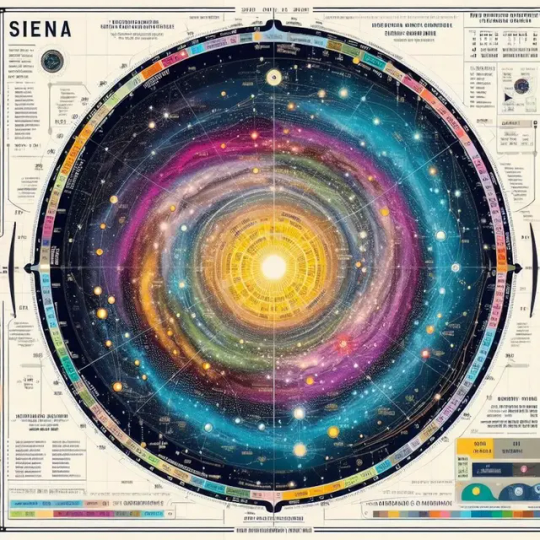
Siena, un nuovo atlante con 380mila galassie, pubblicato online il Siena Galaxy Atlas 2020. È online il Siena Galaxy Atlas, un atlante dettagliato di quasi 400mila galassie, compilato utilizzando i dati dei telescopi NoirLab di Nsf e progettato per essere il principale atlante galattico digitale per le galassie grandi. Si tratta di un tesoro di informazioni, utili per lo studio di vari aspetti dell’universo, dalla formazione ed evoluzione delle galassie alla materia oscura e alle onde gravitazionali. Tutti i dettagli su ApJ.

Ngc 520, una collisione di due galassie iniziata più di 300 milioni di anni fa, è in realtà composta da due galassie a disco che alla fine si fonderanno per formare un sistema più grande e massiccio. Ngc 520 fu scoperta da William Herschel nel 1784 ed è una delle galassie più grandi e luminose del Siena Galaxy Atlas. Crediti: Ctio/ NoirLab/ Doe/ Nsf/ Aura; J. Moustakas (Siena College); T.A. Rector (University of Alaska Anchorage/Nsf’s NoirLab) & M. Zamani (Nsf’s NoirLab) & D. de Martin (Nsf’s NoirLab) Gli astronomi cercano da tempo di mappare i cieli notturni, non solo per avere una visione il più possibile completa dell’universo in cui viviamo, ma anche per supportare ulteriori ricerche. I cataloghi di oggetti astronomici servono a molti scopi: possono aiutare gli scienziati a individuare modelli generali in una popolazione di oggetti, a scoprire nuovi fenomeni come ad esempio eventi astronomici transienti, e a identificare quelli che potrebbero essere i candidati migliori per osservazioni mirate. Tuttavia, queste risorse devono essere regolarmente aggiornate per tenere conto dei risultati ottenuti grazie ai continui miglioramenti tecnologici dei telescopi. Ora è stato pubblicato un nuovo atlante con informazioni dettagliate su oltre 380mila galassie con un livello di precisione mai raggiunto prima. Si chiama Siena Galaxy Atlas (Sga) ed è una raccolta di dati provenienti da tre survey completate tra il 2014 e il 2017, note come Desi Legacy Surveys, effettuate per identificare le galassie target per la survey del Dark Energy Spectroscopic Instrument (Desi). I dati sono stati raccolti presso l’Osservatorio interamericano di Cerro Tololo (Ctio) e l’Osservatorio nazionale di Kitt Peak (Kpno), entrambi programmi del NoirLab della National Science Foundation (Nsf), e presso lo Steward Observatory dell’Università dell’Arizona. Le Desi Legacy Surveys hanno utilizzato strumenti all’avanguardia sui telescopi gestiti da NoirLab: la Dark Energy Camera Legacy Survey (DeCaLS), effettuata utilizzando la Dark Energy Camera (DeCam) costruita dal Doe sul telescopio da 4 metri Víctor M. Blanco al Ctio in Cile; la Mayall z-band Legacy Survey (MzLS) con la fotocamera Mosaic3 sul telescopio da 4 metri Nicholas U. Mayall al Kpno; e la Beijing-Arizona Sky Survey (Bass) realizzata con la fotocamera 90Prime sul telescopio Bok da 2,3 metri, gestito dallo Steward Observatory e ospitato presso Kpno. I dati delle Desi Legacy Imaging Surveys, così come una copia dell’intero Siena Galaxy Atlas, vengono forniti alla comunità astronomica tramite la piattaforma scientifica Astro Data Lab e l’Astro Data Archive presso il Community Science and Data Center (Csdc) di NoirLab. Sga contiene anche dati aggiuntivi provenienti da una survey condotta dal satellite Wide-field Infrared Survey Explorer (Wise) della Nasa, rielaborati da Aaron Meisner, astronomo del NoirLab. Queste survey hanno catturato immagini nelle lunghezze d’onda ottiche e infrarosse per mappare un’area totale di 20mila gradi quadrati – quasi la metà del cielo notturno, rendendola tra le più grandi survey sulle galassie. Riunendo questa ricchezza di informazioni in un unico posto, Sga offre dati precisi sulla posizione, la forma e le dimensioni di centinaia di migliaia di grandi galassie relativamente vicine. Oltre all’enorme numero di oggetti registrati, i dati nella raccolta Sga raggiungono anche un nuovo livello di accuratezza ed è la prima risorsa di questo tipo a fornire dati sui profili di luce delle galassie.

Mosaico ottico di 42 galassie del Siena Galaxy Atlas 2020 ordinate per diametro angolare crescente da sinistra in alto, a destra in basso. Le galassie vengono scelte casualmente da una distribuzione di probabilità uniforme nel diametro angolare. La barra bianca orizzontale nell’angolo inferiore sinistro di ciascun pannello rappresenta 1 minuto d’arco e i ritagli del mosaico vanno da 3,2 a 13,4 minuti d’arco. Questa figura illustra l’enorme gamma di tipologie, dimensioni, colori e profili di luminosità superficiale, struttura interna e ambienti delle galassie presenti nell’atlante. Crediti: Ctio/ NoirLab/ Doe/ Nsf/ Aura/ J. Moustakas «Le grandi galassie vicine sono importanti perché possiamo studiarle in modo più dettagliato di qualsiasi altra galassia nell’universo; sono i nostri vicini cosmici», osserva John Moustakas, professore di fisica al Siena College a capo del progetto Sga. «Non solo sono straordinariamente belle, ma contengono anche la chiave per comprendere come si formano e si evolvono le galassie, inclusa la nostra, la Via Lattea». Sga si basa su diversi cataloghi compilati nei secoli scorsi. L’iconico Catalogue des Nébuleuses et des Amas d’Étoiles (Catalogo delle nebulose e degli ammassi stellari), pubblicato nel 1774 dall’astronomo francese Charles Messier, fu una pietra miliare importante, così come lo fu il Nuovo Catalogo Generale delle Nebulose e degli Ammassi di Stelle (Ngc), pubblicato nel 1888 da John Louis Emil Dreyer. Più recentemente, nel 1991, gli astronomi hanno realizzato il Terzo Catalogo di Riferimento delle Galassie Luminose (Rc3). Negli ultimi due decenni sono stati pubblicati molti altri preziosi atlanti di galassie, ma la maggior parte di essi si basa sulle misurazioni su lastre fotografiche dell’Rc3, oppure mancano un numero significativo di galassie. Poiché Sga utilizza immagini digitali catturate con strumenti altamente sensibili, rappresenta un miglioramento sostanziale sia nella qualità che nella completezza dei dati. «Precedenti compilazioni di galassie erano afflitte da posizioni, dimensioni e forme errate delle galassie e contenevano anche voci che non erano galassie ma stelle o artefatti», spiega Arjun Dey, astronomo del NoirLab coinvolto nel progetto. «Sga ripulisce tutto questo per gran parte del cielo. Fornisce inoltre le migliori misurazioni della luminosità delle galassie, qualcosa che non avevamo mai avuto prima in modo affidabile per un campione di queste dimensioni».

IC 4212 è una galassia spirale barrata situata nella costellazione della Vergine. Si trova vicino all’equatore celeste, il che significa che in alcuni periodi dell’anno è visibile almeno in parte da entrambi gli emisferi. Crediti: Ctio/ NoirLab/ Doe/ Nsf/ Aura; J. Moustakas (Siena College); T.A. Rector (University of Alaska Anchorage/Nsf’s NoirLab) & M. Zamani (Nsf’s NoirLab) & D. de Martin (Nsf’s NoirLab) Questa risorsa versatile guider�� il progresso in numerosi rami dell’astronomia e dell’astrofisica aiutando gli scienziati a trovare i migliori campioni di galassie per l’osservazione mirata. Ad esempio, Sga migliorerà la ricerca su come i modelli di formazione stellare variano nelle diverse galassie, sui processi fisici alla base della vasta gamma di morfologie che le galassie mostrano e su come la distribuzione delle galassie è correlata al modo in cui la materia oscura si diffonde nell’universo. Agendo come una mappa, Sga aiuterà anche gli astronomi a individuare le sorgenti di segnali transitori come le onde gravitazionali e a comprendere gli eventi che ne danno origine. «Sga diventerà il più importante atlante galattico digitale per le grandi galassie», afferma Dey. Tuttavia, sottolinea, Sga non è riservato solo ai ricercatori accademici, ma è liberamente consultabile online per chiunque desideri conoscere meglio il nostro angolo di universo. «Il rilascio pubblico di questi dati spettacolari contenuti nell’atlante avrà un impatto reale non solo sulla ricerca astronomica, ma anche sulla capacità del pubblico di visualizzare e identificare le galassie relativamente vicine», conclude Chris Davis, direttore del programma Nsf per NoirLab. «Gli astrofili più appassionati lo apprezzeranno particolarmente in quanto risorsa a cui rivolgersi per saperne di più su alcuni degli obiettivi celesti che osservano». Per saperne di più: Leggi su The Astrophysical Journal l’articolo “Siena Galaxy Atlas 2020” di John Moustakas, Dustin Lang, Arjun Dey, Stéphanie Juneau, Aaron Meisner, Adam D. Myers, Edward F. Schlafly, David J. Schlegel, Francisco Valdes, Benjamin A. Weaver, and Rongpu Zhou - Esplora il Siena Galaxy Atlas 2020 Read the full article
#Cataloghiastronomici#galassie#grandigalassie#materiaoscura#NoirLab#nuovoatlante#ondegravitazionali#SienaGalaxyAtlas#telescopioNsf#vialattea
2 notes
·
View notes
Text

A once in a lifetime picture. ☄️
On Saturday, 11 July 2020, Comet NEOWISE was spotted over Stonehenge.
It's been the brightest comet of the 21st century making it visible to the naked eye despite being around 400 times further away than the moon.
📷: @Josh_Dury
NOTE:
C/2020 F3 (NEOWISE) or Comet NEOWISE is a long period comet with a near-parabolic orbit discovered on 27 March 2020 by astronomers during the NEOWISE mission of the Wide-field Infrared Survey Explorer (WISE) space telescope.
#Comet NEOWISE#Stonehenge#comet#Wide-field Infrared Survey Explorer (WISE)#NEOWISE mission#C/2020 F3
45 notes
·
View notes
Link
4 min read A Solar Neighborhood Census, Thanks to NASA Citizen Science This artist’s conce...
#originaltags#astrophysics division#brown dwarfs#citizen science#neowise#stars#the universe#wise (wide-field infrared survey explorer)
0 notes
Text
Exoplanet Exploration: Unlocking the Secrets of Distant Worlds

The quest to discover and study exoplanets—planets orbiting stars beyond our solar system—has become one of the most exciting and rapidly advancing fields in modern astronomy. With new technologies and missions, scientists are uncovering the mysteries of these distant worlds and inching closer to answering one of humanity's most profound questions: Are we alone in the universe?
A Brief History of Exoplanet Discoveries
The first confirmed exoplanet discovery was made in 1992, when astronomers Aleksander Wolszczan and Dale Frail detected two planets orbiting a pulsar, a type of neutron star. In 1995, the first exoplanet orbiting a main-sequence star similar to our Sun was discovered by Michel Mayor and Didier Queloz. This groundbreaking discovery earned them the Nobel Prize in Physics in 2019.
The Role of Kepler and TESS
NASA's Kepler Space Telescope, launched in 2009, revolutionized the field of exoplanet research. By observing over 150,000 stars, Kepler discovered more than 2,600 exoplanets, revealing that planets are common in the galaxy. Its successor, the Transiting Exoplanet Survey Satellite (TESS), launched in 2018, continues this legacy by surveying the entire sky and identifying hundreds of exoplanet candidates.
Methods of Detection
There are several methods used to detect and study exoplanets:
1. Transit Method: This involves measuring the dip in a star's brightness as a planet passes in front of it. Both Kepler and TESS primarily use this method.
2. Radial Velocity Method: By detecting the slight wobble in a star's motion caused by the gravitational pull of an orbiting planet, astronomers can infer the presence of the planet.
3. Direct Imaging: Although challenging due to the brightness of stars, direct imaging captures pictures of exoplanets by blocking out the starlight.
4. Gravitational Microlensing: This method involves observing the light from a distant star being bent and magnified by the gravity of an intervening object, which could be a planet.
The Search for Habitability
A key focus of exoplanet exploration is identifying potentially habitable planets. Scientists look for planets in the "habitable zone," where conditions might be right for liquid water to exist. Discoveries such as the TRAPPIST-1 system, with seven Earth-sized planets, three of which are in the habitable zone, have captivated researchers and the public alike.
Future Missions and Prospects
Several upcoming missions promise to further our understanding of exoplanets:
- James Webb Space Telescope (JWST): Launched in 2021, JWST is equipped with advanced instruments to study the atmospheres of exoplanets and search for signs of life.
https://webbtelescope.org
- European Space Agency's ARIEL (Atmospheric Remote-sensing Infrared Exoplanet Large-survey): Set to launch in 2029, ARIEL will focus on analyzing the atmospheres of hundreds of exoplanets.
- Nancy Grace Roman Space Telescope: Expected to launch in the mid-2020s, this mission will survey wide fields of the sky and discover thousands of new exoplanets.
The exploration of exoplanets continues to push the boundaries of our knowledge and imagination. Each discovery brings us closer to understanding the diversity of planetary systems and the potential for life beyond Earth. As technology advances and new missions take flight, the future of exoplanet research holds endless possibilities and promises to unlock the secrets of distant worlds.
#linklayer#blog#science#space#planets#astronomy#space exploration#space science#nasawebb#nasa#kepler#exoplanets
0 notes